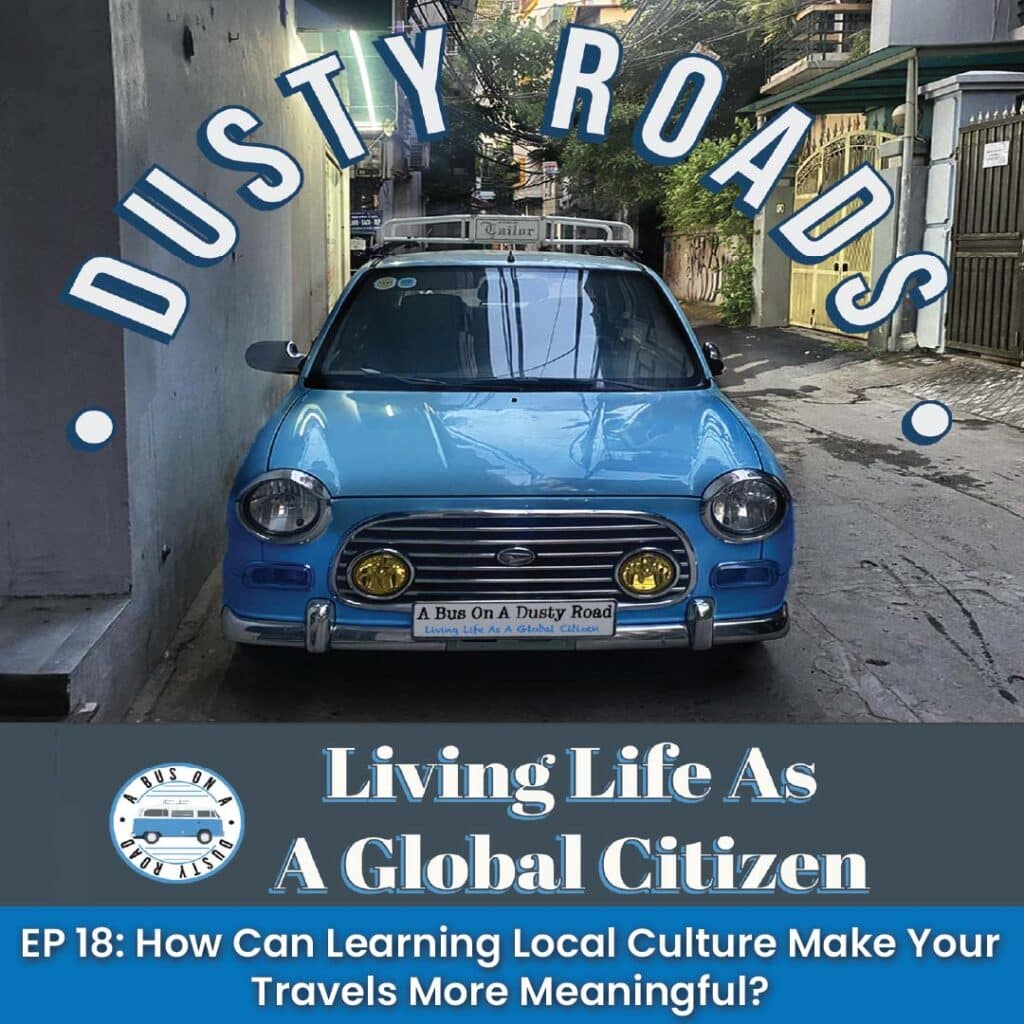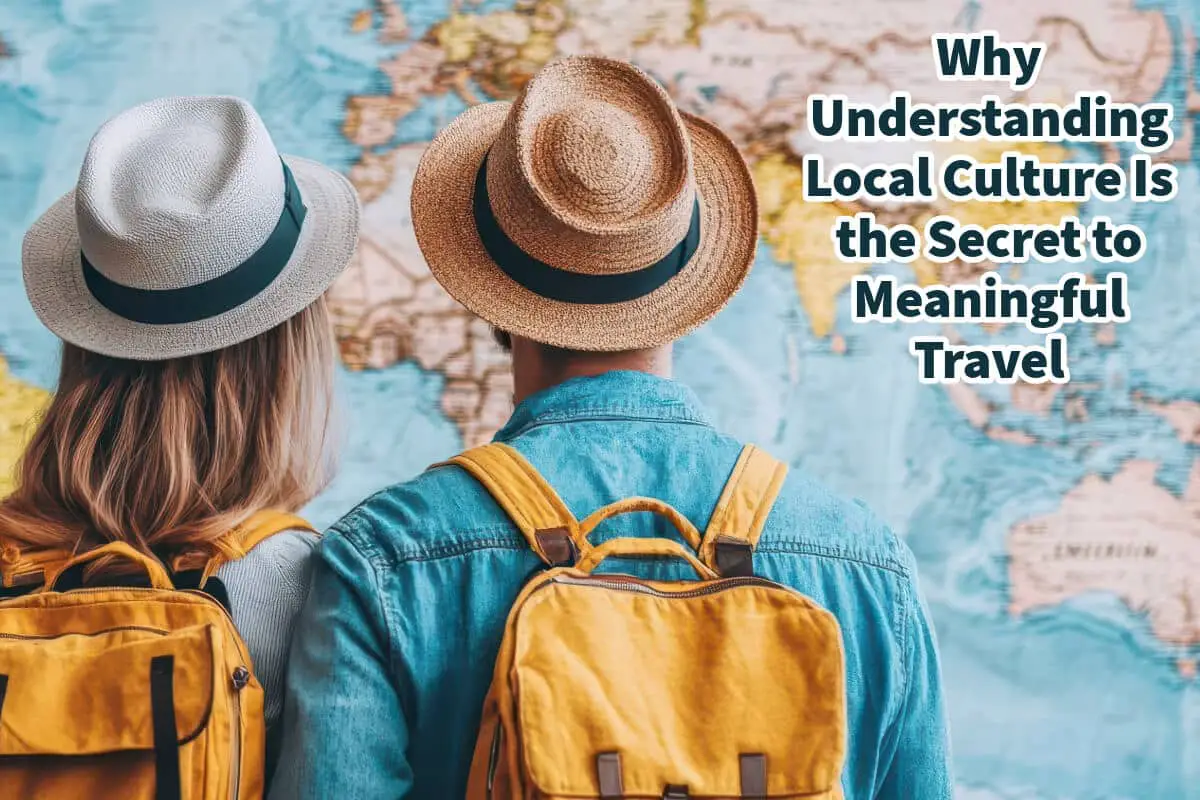Travel is more than ticking places off a bucket list. It’s not just about the photos, the food, or the landmarks.
At its best, travel is about connection. It’s about getting closer to a place and its people in a way that goes beyond the surface. That kind of experience doesn’t come from a guidebook or a TikTok recommendation. It comes from cultural literacy.
Table of Contents
- What Is Cultural Literacy, and Why Does It Matter?
- Asia: Relationships, Respect, and Rituals
- Europe: Tone It Down, Listen More
- Middle East: Generosity and Social Etiquette
- Latin America: Warmth, Time, and Flexibility
- Africa: Community and Respect for Elders
- Why This All Matters
- Quick Tips for Being Culturally Aware While Traveling:
- Listen To Our Podcast About How Can Learning Local Culture Make Your Travels More Meaningful? Below or By clicking here.
- Related Questions
What Is Cultural Literacy, and Why Does It Matter?
Cultural literacy is the ability to understand and respect the norms, values, behaviors, and customs of other cultures. It’s not just about learning what to do or not do; it’s about knowing why those things matter to the people who live there.
When you understand these cultural cues, you avoid being the clueless outsider and become someone who truly engages with the world.
In practical terms, cultural literacy helps you:
- Avoid offending locals
- Build real connections
- Experience places more authentically
- Navigate social situations with confidence
Without it, you’re just a tourist. With it, you’re a traveler who gets it.

Asia: Relationships, Respect, and Rituals
Many Asian cultures value relationships and social harmony. In countries like China, Japan, and South Korea, the concept of “face” (a person’s reputation and social standing) plays a huge role in daily interactions. Maintaining harmony often takes precedence over being direct in business and social life.
Hospitality in Asia
Take a typical dinner in Asia. If you’re invited to someone’s home in China or Vietnam, it’s not just about feeding you. It’s about showing respect, care, and generosity. Your host might insist you try every dish.
Saying “I’m full” may not be accepted the first time. They want to make sure you’re happy, that you’re being taken care of. To a Western traveler, this could feel pushy, but to your host, it’s a gesture of deep hospitality.
Respecting Sacred Practices
In Thailand, cultural respect extends into daily body language. The head is considered the most sacred part of the body, and touching someone’s head, even playfully, is disrespectful.
Likewise, the feet are considered lowly and dirty. Pointing your feet at someone, especially a Buddha statue or monk, is rude.
In Japan, bowing is not just a greeting. It’s a layered form of communication with different meanings depending on depth and duration. Understanding when and how to bow is key to showing respect.

Europe: Tone It Down, Listen More
Europe’s cultural nuances often trip up travelers, especially Americans. The stereotype of the “loud American” is more than a cliche in places like France, Italy, and Germany. It stems from fundamental cultural differences around public behavior.
Volume and Public Behavior
In the U.S., being friendly often means being enthusiastic, chatty, and loud. In much of Europe, public spaces are for quieter, more reserved behavior. Talking loudly on public transport or in cafes can draw annoyed stares.
Personal Space and Communication Style
Personal space is a big deal in Northern Europe—say, Finland or Sweden. Standing too close to someone or jumping into conversation can come off as intrusive.
In contrast, in Southern Europe, like Spain or Italy, conversations may be more animated, and physical touch (like a pat on the shoulder or a kiss on the cheek) is more common.
Also, in some European countries, people value understatement and subtlety. Over-the-top enthusiasm can seem insincere. Listening more and observing before jumping in helps you sync with the local vibe.

Middle East: Generosity and Social Etiquette
In many Middle Eastern cultures, hospitality isn’t a nicety—it’s a core value. Guests are treated with immense respect. Refusing food or drink too quickly can seem impolite. Taking time to share tea and engage in conversation is a way of building trust.
Modesty in dress and behavior is also crucial in many places, especially for women. It’s not about policing behavior; it’s about aligning with local expectations and showing cultural awareness.

Latin America: Warmth, Time, and Flexibility
In countries across Latin America, social warmth is the norm. Expect hugs, cheek kisses, and proximity during conversations. Declining these gestures might come off as cold or unfriendly.
Time is also perceived differently. “Late” doesn’t always mean the same thing. A dinner invitation for 7 p.m. might not start until 8:30. Being too rigid or impatient can cause friction.
Understanding these rhythms makes the experience smoother and more enjoyable. It also shows respect for how others live.

Africa: Community and Respect for Elders
Africa is incredibly diverse, but community values and respect for elders are common threads across many cultures on the continent. In places like Ghana or Kenya, greeting everyone when entering a room or public space is customary. Skipping greetings can be seen as rude.
Elders are often treated with deference. Speaking to older individuals requires politeness and sometimes a more formal tone. Taking the time to learn local greetings in the native language goes a long way.
Why This All Matters
Understanding culture transforms travel from consumption into connection. It turns a trip from just seeing things into being part of something. It also prevents the missteps that make you that tourist—the one who offends people without realizing it.
In a time when travel is more accessible than ever, cultural literacy is the difference between being a global citizen and a global consumer.
Quick Tips for Being Culturally Aware While Traveling:
Do Your Homework:
A quick search on local customs can save you from embarrassing or offensive behavior.
Observe First:
Watch how locals behave before jumping in. It’s the fastest way to understand norms.
Ask Questions:
Most people appreciate curiosity and humility. Ask about traditions or behaviors you don’t understand.
Be Humble:
You’re a guest. Approach each place with respect.
Learn a Few Words:
A simple “thank you” or greeting in the local language can go a long way.
Cultural understanding isn’t about perfection; it’s about effort. No one expects you to get everything right. But making the effort shows you care. It shows you’re not just passing through but that you want to understand. And in return, you’ll often find people open up more, share more, and welcome you in.
Travel becomes meaningful not just because of where you go but also because of how you go and how you show up once you’re there. And that starts with understanding culture.
Listen To Our Podcast About
How Can Learning Local Culture Make Your Travels More Meaningful?
Below or By clicking here.

At A Bus On A Dusty Road, we talk about travel, life, and ex-pat living. We are all about “Living Life As A Global Citizen.” We explore social, cultural, and economic issues and travel.
We would love to have you be part of our community. Sign up for our newsletter to keep up-to-date by clicking here. If you have any questions, you can contact me, Anita, by clicking here.
Listen to our Podcast called Dusty Roads. You can find it on all major podcast platforms. Try out listening to one of our podcasts by clicking here.
Subscribe to our A Bus On A Dusty Road YouTube Channel with great videos and information by clicking here.
Related Questions
7 Realities Of Becoming A Global Nomad And Remote Working
There are many realities about becoming a global nomad or deciding that you are going to work overseas. Life will be different, and in some cases, no matter where you choose to work, you may find it very difficult just because of Internet availability, electricity, or other aspects of your life overseas.
By clicking here, you can discover 7 Realities Of Becoming A Global Nomad And Remote Working.
How Big Is The Grand Canyon? & Other Grand Canyon Questions
The Grand Canyon area is 277 miles long or about 1,904 square miles. It is a vast area that will take you 5 hours or 215 miles to travel from the North Rim to the South Rim of the Grand Canyon. Most of the area does not have hiking or other trails. As the Grand Canyon took about 6 million years to create, it is one of the world’s natural wonders.
By clicking here, you can discover How Big Is The Grand Canyon? & Other Grand Canyon Questions.
How Closely Related Are The Thai And Vietnamese Languages?
Thai and Vietnamese are both Asian-based languages, but they are from different language family groups despite being Asian-based. Both Thai and Vietnamese are tonal languages and are analytic languages. Both Thai and Vietnamese have similar-sounding vowels and sounds and similar word order.
By clicking here, you can discover How Closely Related Are The Thai And Vietnamese Languages?

